RFID Webinar: Improve Returnable Container Tracking with RFID
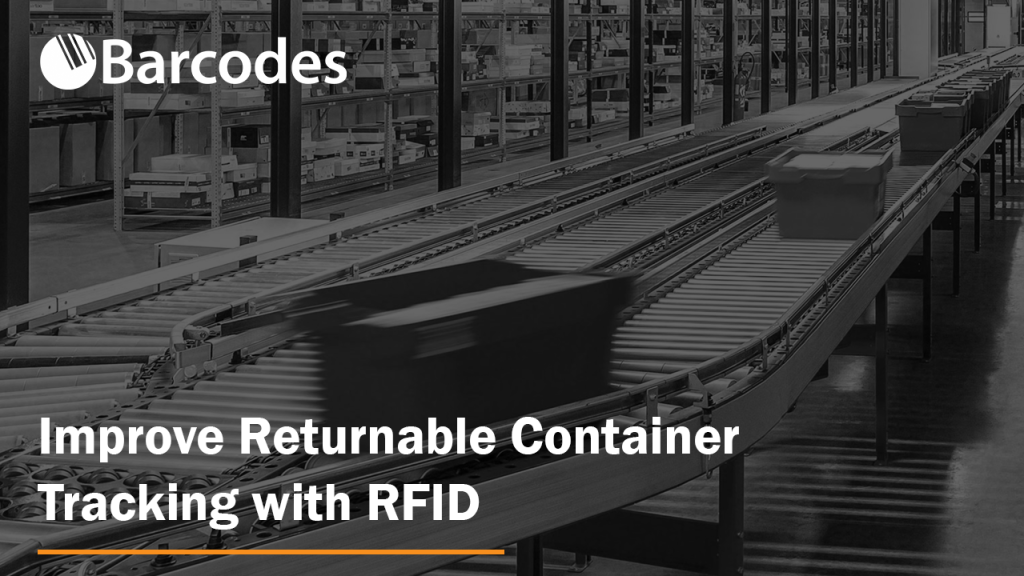
Webinar
Improve Returnable Container Tracking with RFID
Thursday April 20th 1:00-1:45pm Central
PRESENTED BY:
Christopher Vassilos – Senior Solutions Architect, Barcodes Group
Michael Daily – Senior Solutions Engineer, Impinj
RFID-Based Container Tracking
Upon delivery, it’s common for reusable containers to not be returned to the sender, with annual shrinkage rates often exceeding 10%. Keeping track of your Returnable Transport Items (RTIs) can be challenging, especially when logging their location depends on manual processes like scanning.
In this webinar, discover the benefits of RFID-based container tracking:
- Reduce the number of misplaced pallets, kegs, and boxes. Less new delivery assets need to be purchased, and shipments are not interrupted due to lack of totes.
- Track each asset as it leaves and returns to the warehouse, allowing you to determine its exact location immediately and whether they have yet to return.
- Calculate the flow of returnable assets to fully understand your shipping capacity for the present and future.
- Improve utilization of workers since it takes way less time to scan RFID tags than barcodes, due to its fully automatable reading without line-of-sight requirements.
Watch the Full RFID Webinar Recording
Improve Returnable Container Tracking with RFID

Returnable Transfer Items (RTIs), or returnable containers are critical assets for almost all manufacturing and logistics organizations. RTIs transport stock and commodities from one site to another. However, keeping track of your RTIs is a different story. Well-known manufacturers and logistics expert still often rely on manual methods, such as traditional scanning, spreadsheet, or pen and paper.
This leads to a major issue: inventory shrinkage.

Mismanagement of returnable containers owing to theft, unrecorded damage, or simply the inability of consumers to return empty pallets, kegs, and boxes costs a fortune.
How are Your Returnable Transfer Items Being Tracked Currently?
Barcode labels used to tag the cargo of a container during shipment are often non-permanent. Traditional barcode scanners and labels identify the contents of the container, but seldom provide reverse logistics tracking for the containers themselves.
Using permanent barcode labels as the foundation for a container monitoring system is not feasible. I know that might be strange to hear from a company called Barcodes, Inc. But scanning labels at various stages of the supply chain sometimes necessitates extra human effort, which is even more difficult when empty containers pile up.
One solution is to establish a tracking system utilizing modern asset tracking technology.
Reducing Yearly Inventory Shrinkage with RFID
“15% of all pallets in circulation vanish” or “20% of all packaging/equipment is lost owing to consumers retaining them for their own use or third parties removing them for their own use.”
SLS RFID 2016 Study
Inventory shrinkage is a major issue in the management of returnable transfer items (RTIs), which include all types of shipping containers, packaging, pallets, kegs, and boxes.
Shrinkage due to theft, unreported damage, or just consumers failing to return empty containers is a serious concern in this field.
Estimated annual shrinkage rates are anywhere from 3 to 9%. If you’re constantly replacing lost or stolen RTIs, the impact on profitability is a huge problem.
For organizations to decrease RTI shrinkage, RFID is appealing due to completely automated scanning without line-of-sight, as well as mass tag reading. The key advantage of RFID-based container monitoring systems is an improvement in container return rates. New containers are purchased in smaller batches and less frequently.
What Data Can Be Tracked with RFID Tags?
Integrating the RFiD Discovery system with your ERP system enables company-wide visibility of your RTIs, ensuring that essential assets are accessible at the relevant locations to fulfill any transportation request.
Exactly what the RFID ultimately tracks depends on your unique tracking requirements. Here are some examples of the depth of data you can store in a small RFID tag:
- Container Name
- Size
- Location
- Weight
- Item Quantity
- Container Properties
User memory on tags stores data. The serial number field can be pre-programmed or user-assigned.
The air-interface protocol standards for passive HF and UHF tags, such as UHF EPC Gen 2, define basic functions like read-write and which memory banks or blocks can be written to. Reader manufacturers include these low-level commands with higher-level subroutines in their software development kits for application developers.
How to Use RFID to Tag RTIs
RFID labels are long-lasting and more durable than traditional labels. RFID tags attach exceptionally well to returnable cargo and resist machine washing operations as well as harsh elements for much longer.
Any RTI equipped with an RFID tag can be detected by a small number of strategically located readers. The location data is delivered back to the central RFID Discovery database, where it may be evaluated.
This database allows you to discover how many RTIs have been sent to a specific supplier or customer, so you know which trade partner to approach when requesting a return.
When shipping containers are in range of an RFID reader, the information on the tags can be automatically acquired using a wide variety of methods:
- Fixed reader installed at a warehouse entrance or loading dock
- A mobile reader installed on a forklift
- Handheld reader brought inside a business partner’s facility for rapid inventory
What are the Main Advantages of Using RFID for Returnable Asset Tracking?
There are several advantages of using RFID to track returnable assets.
1. Recoup Billions of Dollars in RTI-Related Losses
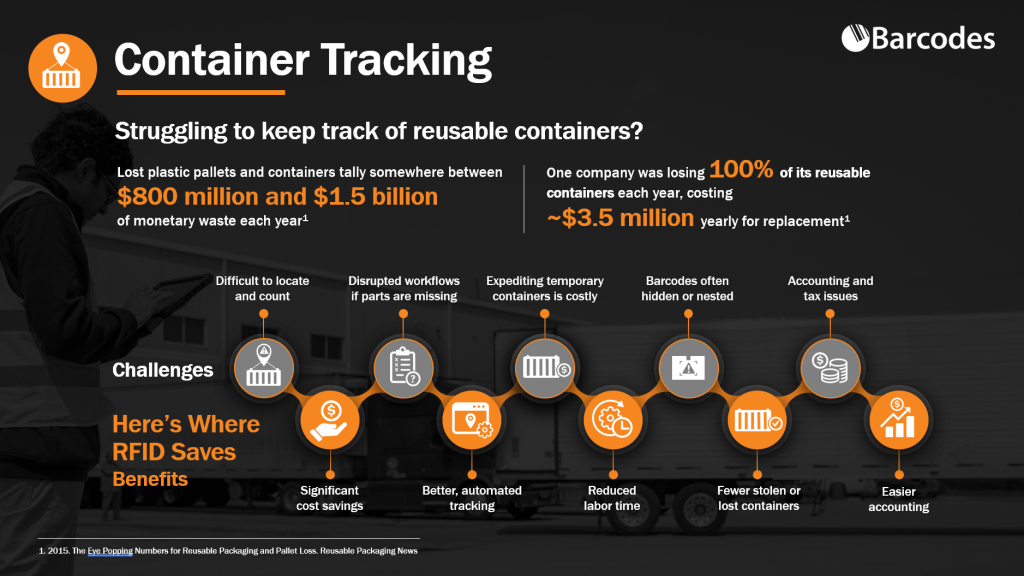
Reusable assets are returned to the sender after delivery, usually full of new goods and not empty. Entire industries are dedicated to capitalizing on reverse logistics and maximizing the value of containers.
So why do we pay far less attention to reusable assets compared to sold commodities and container space? In order to get a bird’s eye view of costly shrinkage areas, your immediate shipping capacity, and overall supply chain health, it’s critical to assess the flow of returnable assets as well.
If RTIs arrive in the incorrect place or are lost, the transfer of products becomes difficult or impossible, thereby causing delivery delays. And massive container replacement costs.
These misplaced assets represent billions of dollars in losses, since new delivery assets must be acquired. We will say again: RFID saves billions of dollars.
2. Track Every Asset Location With a Detailed Evidence Trail
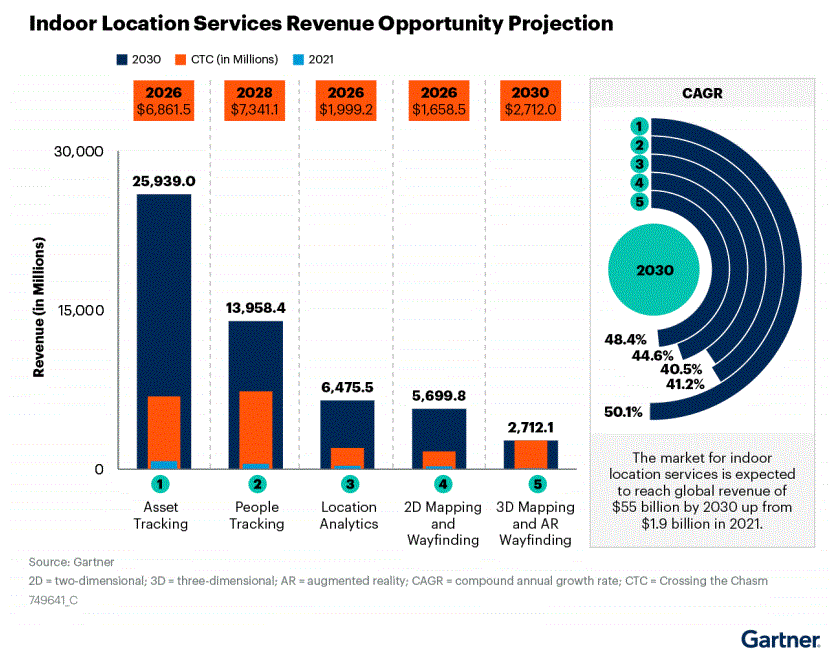
While we like to imagine most people are honest and good by nature, the reality is that customers and suppliers are not going to eager to assist when the subject of locating your missing valuables is brought up. Tough luck.
Instead of playing the blame game, utilizing an RFID system to track each asset as it leaves and returns to the warehouse allows you to instantly establish its specific location, and whether it has yet to return.
This goes for both goods sold as well as the RTIs carrying them. Put another way, your returnables are much more likely to return.
3. Increase Visibility of Container Locations, Available Stock, and Overall Condition
Though shipping should be a precise science, we know that’s not always the case.

Businesses depend on RTIs everyday, but lack visibility over the availability, location, and quality of their RTIs.
When organizations incorporate careful pallet monitoring, tote box tracking, and stillage tracking, it’s much easier to manage a large pool of RTIs without bleeding money. Additionally, there is no longer a need to keep just-in-case containers on the sidelines, because of increased visibility into the “who, what, where, and how many?” questions.
4. Improve Labor Utilization at Every Level of the Supply Chain
Scanning RFID tags takes substantially less time than scanning barcodes. Similarly, RFID is a more appealing identifying solution for reusable assets since users do not need to manufacture new barcodes or print new labels.
Logistics and operational leaders can simply re-encode the same RFID tags again and again without increasing headcount or allocating redundant processes to busy workers.
Lastly, RTLS on RFID can significantly reduce the amount of time workers spend searching for specific inventory. In a field such as healthcare, nurses estimate they spend at least an hour per shift finding equipment. That really adds up when looking at overall labor utilization.
Evaluating and Deploying an Effective RTI Tracking System
Tracking RTIs with RFID helps prevent your assets getting lost or stolen, reduces disputes between trading partners, enables rapid inventory cycle counting, and quickly identifies shortages. Your organization could be saving billions of dollars.
Barcodes, Inc. is your trusted RFID partner and integrator. Contact us when you are ready to elevate your RTI management and discover the magic of RFID tracking. It’s easier to deploy with a partner you can trust.
Zebra’s Silverline On-Demand RFID Metal Asset Tagging Solution
 Zebra and Confidex have worked together to develop this unique solution consisting of a redesigned ZT410 RFID printer, optimized Silverline labels and high quality Zebra ribbons. This combination provides for excellent print quality, encoding accuracy and ease of solution deployment and use. Silverline labels, now offered exclusively by Zebra, are available in three sizes to meet the needs of a wide variety of applications. When combined with Zebra’s RFID reader portfolio, the launch of Silverline enables complete Zebra RFID solutions for the most critical Enterprise Assets. For example in healthcare, hospital assets like wheel chairs, beds, oxygen canisters, IV pumps, medical diagnostic instruments, etc. can now be accurately and efficiently RFID tagged. In manufacturing, it enables tagging of tools, fixtures, metal parts, returnable containers, etc. Tagging of IT assets such as laptops, servers, tablets, etc. is another ideal use case.
Zebra and Confidex have worked together to develop this unique solution consisting of a redesigned ZT410 RFID printer, optimized Silverline labels and high quality Zebra ribbons. This combination provides for excellent print quality, encoding accuracy and ease of solution deployment and use. Silverline labels, now offered exclusively by Zebra, are available in three sizes to meet the needs of a wide variety of applications. When combined with Zebra’s RFID reader portfolio, the launch of Silverline enables complete Zebra RFID solutions for the most critical Enterprise Assets. For example in healthcare, hospital assets like wheel chairs, beds, oxygen canisters, IV pumps, medical diagnostic instruments, etc. can now be accurately and efficiently RFID tagged. In manufacturing, it enables tagging of tools, fixtures, metal parts, returnable containers, etc. Tagging of IT assets such as laptops, servers, tablets, etc. is another ideal use case.
Silverline Solution:
• Total Solution: Silverline RFID tags and Zebra ZT410 Silverline printer
• Provides RFID labels that work directly on all surfaces
• Prints and encodes labels for metal and liquid-filled assets
• Choose from three types of RFID labels: standard, slim and micro
• Available Globally
• Read range of up to 5m
• Reliable, flexible and scalable
Ensuring RFID’s Bottomline Payoff
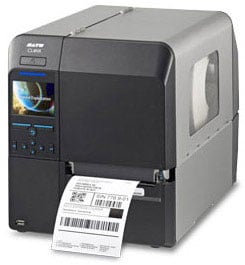 Whether a business leapt at the opportunity to become one of the first suppliers with RFID tagged products or now finds itself currently being mandated to employ the technology, the implementation costs and the potential rewards are the same.
Whether a business leapt at the opportunity to become one of the first suppliers with RFID tagged products or now finds itself currently being mandated to employ the technology, the implementation costs and the potential rewards are the same.
To maximize the benefits of RFID, it is critical to view its capability to drive business process improvement, increase supply chain efficiency and ultimately improve bottom line results. From this perspective, the up front capital costs for hardware, engineering consulting costs, opportunity costs, ongoing cost of tags and, in a manual environment, labor associated with the RFID tagging of products are deemed a necessary investment.
Rather than merely RFID tagging products to satisfy the requirements of their largest customers, companies can move from seeing RFID deployment as just the cost of doing business to an opportunity to enhance productivity and profitability. Understanding the impact of data collection and tracking as well as data integration is essential to RFID optimization.
The Internet of Things with Zebra and Barcodes, Inc.
 What is it?
What is it?
The Internet of Things (IoT) is the coming connectivity of everything you own, everything you see. No longer will access to the internet be limited to single point interfaces like your phone or computer, or single-point data sources like web pages or servers. Nor will it be limited to you! Everything you see can, and someday will, be interconnected and sharing data: your tv, your refrigerator, your home, your car, the roads you drive on, the building you work in, the package you’re delivering… everything.
So far, the Internet of Things has been most closely associated with machine-to-machine (M2M) communication in manufacturing and power, oil and gas utilities. Products built with M2M communication capabilities are often referred to as being smart.
Why do I care?
IoT will affect the way we live and work. IoT will impact every industry out there: Healthcare, Manufacturing, Transportation & Logisitics, Retail, Hospitality, Warehousing, and so on. Your competitors will be embracing IoT capabilities to find a competitive advantage, the same advantage you want to get first. The advantage that comes with speed, efficiency, and a clear view of your assets and operations, your people and inventory, 24/7 in real time.
Frick Introduces New SmartMark RFID Label for High-Voltage Insulators
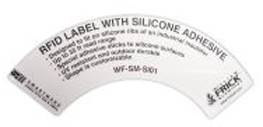
Frick expands its SmartMark product line with the addition of the new WF-SM-SI01 insulator label. As electric utilities, including transmission and distribution companies, modernize power grids, many are discovering the advantages of outfitting insulators and other equipment with RFID tags and labels for future maintenance and inventory tracking purposes. Management, deployment, and replacement of insulators using RFID brings accuracy and efficiency to the process of power delivery.
Zebra’s Compact, Easy-to-Use UHF RFID Printer the ZD500R
The new ZD500R extends Zebra‘s broad range of RFID printers by adding UHF RFID printing and encoding to Zebra’s line of industry-leading  compact thermal desktop printers. Designed for applications where space is at a premium, the ZD500R offers simple, one-touch printing and encoding, straightforward loading, and automatic RFID calibration, making it ideal for applications where technical support staff is limited, such as retail in-store exception tagging.
The printer supports both direct thermal and thermal transfer printing and is compatible with inlays from all leading suppliers. The ZD500R can be used with a variety of RFID labels and tags from small, item-level hang tags to large case and pallet labels. By encoding RFID inlays that are spaced closer together, the ZD500R enables lower media costs, less media waste and fewer roll changes.
RFID Labeling for Retail
Industry Need
In today’s fast paced retail environment, to remain competitive and profitable it is important that retailers and brand owners have a high level of real time visibility of inventory throughout the supply chain and including the retail shelf itself. Accurately tracking products from the manufacturer and through the DC’s in combination with a good alignment with backroom replenishment processes are critical in addressing and improving operational concerns such as inventory related costs associated with cycle stock and safety stock levels.
To be successful in managing inbound and outbound operations as well as in stock and out of stock inventory, retailers must have a way to streamline their processes that will enable them to improve operations and efficiencies on all levels with the end result of increased sales and revenue. Major retailers are looking at multiple areas in their supply chain and at store levels that the integration of RFID into these operations could provide opportunities to make significant gains in speed and accuracy as well as multi-channel inventory management.
Zebra RFID Printer Infographic
Gaining the all the benefits of RFID normally involves turning your standard printed label into a RFID enabled one. Most RFID labeling solutions still utilize barcodes and other printed details on the front of the label for redundancy in case a tag were to get damaged, so finding a reliable RFID printer also means choosing a good barcode printer at the same time.
With the ever expanding options for RFID printers it can be a challenge finding one that suits your application without costing a fortune. Lucky for us, one of the leading manufacturers of barcode printers, Zebra, also makes a full line of RFID printers of the same high caliber. Whether you need a high volume industrial solution, a mobile in-the-field option, or a basic low-volume economical solution, Zebra has an RFID printer to fit any need.
This infographic is a great primer into the Zebra line and you can always contact us at Barcodes Inc. with any questions or need for assistance in choosing the right unit for your business.
Printronix RFID: Prevent Compliance Fines with Online Data Validation
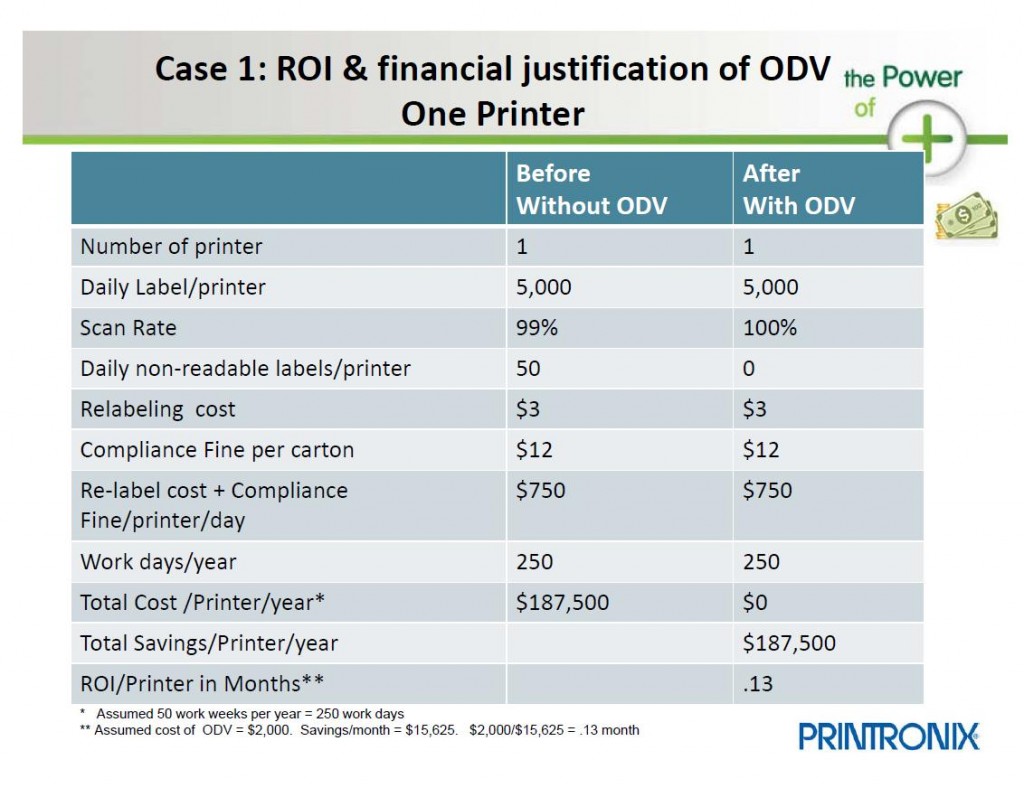 Printronix has built a reputation for building top-of-the-line line matrix and thermal barcode printers and is doing the same with their superb line of RFID printers which are becoming some of the top devices in the RFID industry.
Printronix has built a reputation for building top-of-the-line line matrix and thermal barcode printers and is doing the same with their superb line of RFID printers which are becoming some of the top devices in the RFID industry.
What makes the Printronix RFID printers, the SL5000r and SL4M, Â unique is their ability to incorporate Online Data Validation (ODV) to their RFID printing solution. ODV technology ensures that all barcodes being printed are meeting the most stringent standards set by vendors such as Walmart and the Department of Defense. Maintaining compliance prevents hefty fines that can range up to $20 per box plus the cost to rework, pack and ship the corrected boxes. Thus, a return on investment for a Printronix RFID printer can be achieved on as a little as one poorly labeled shipment.
To learn more about the Printronix RFID printer or how ODV works, please contact one of our Barcodes Inc RFID experts.





